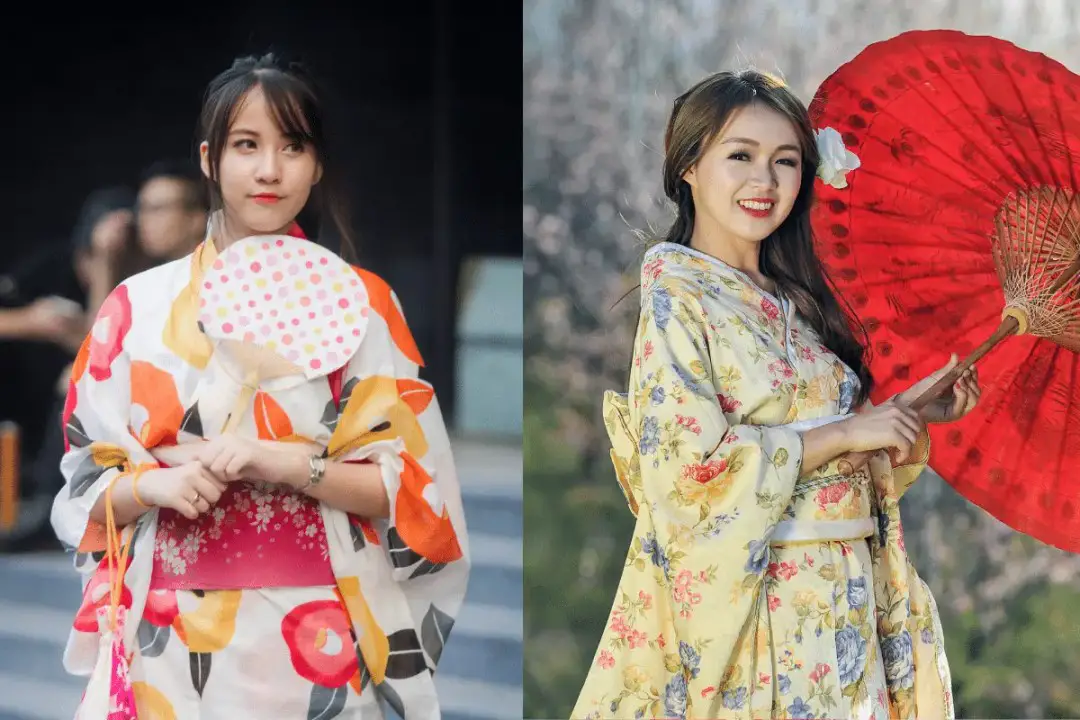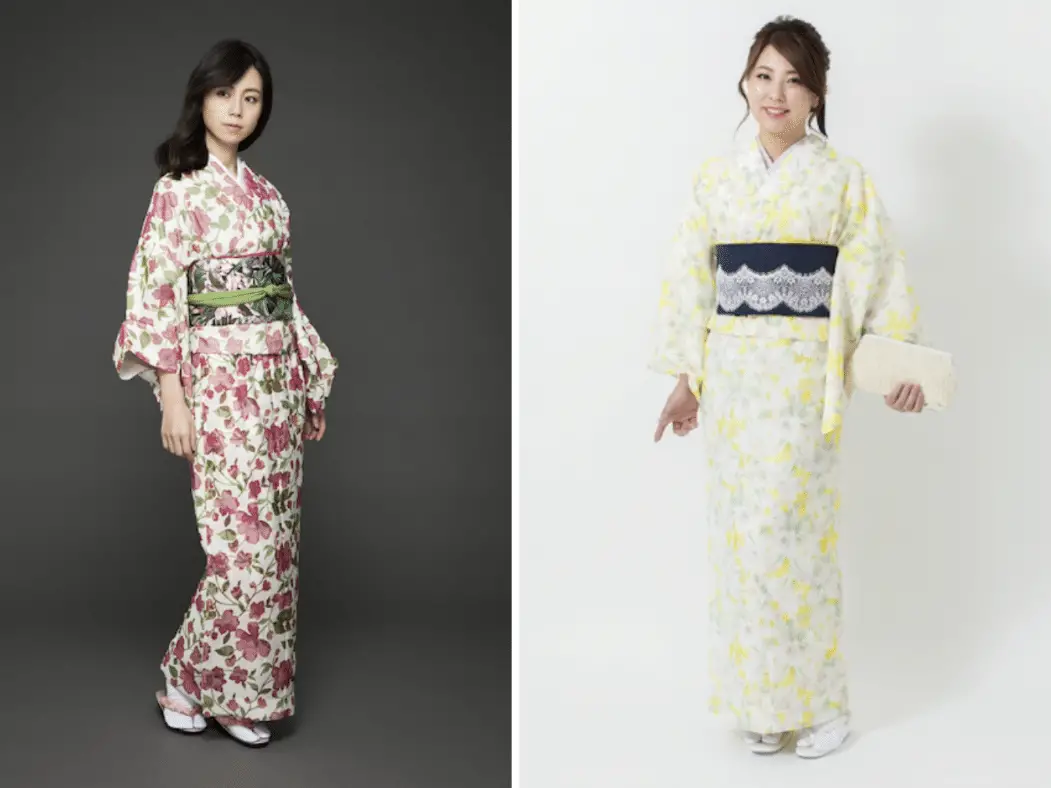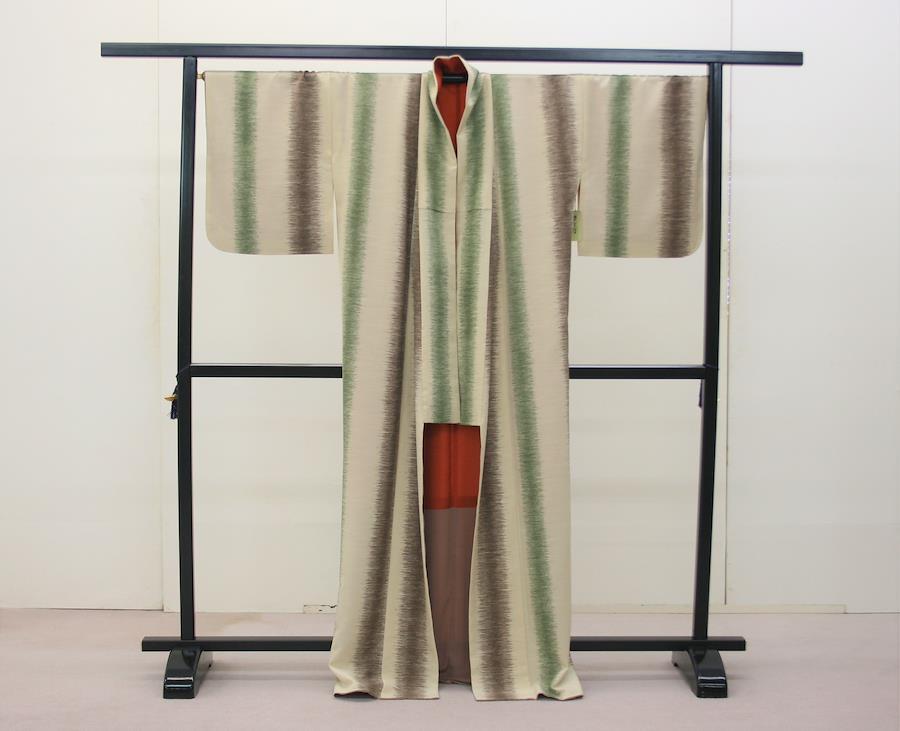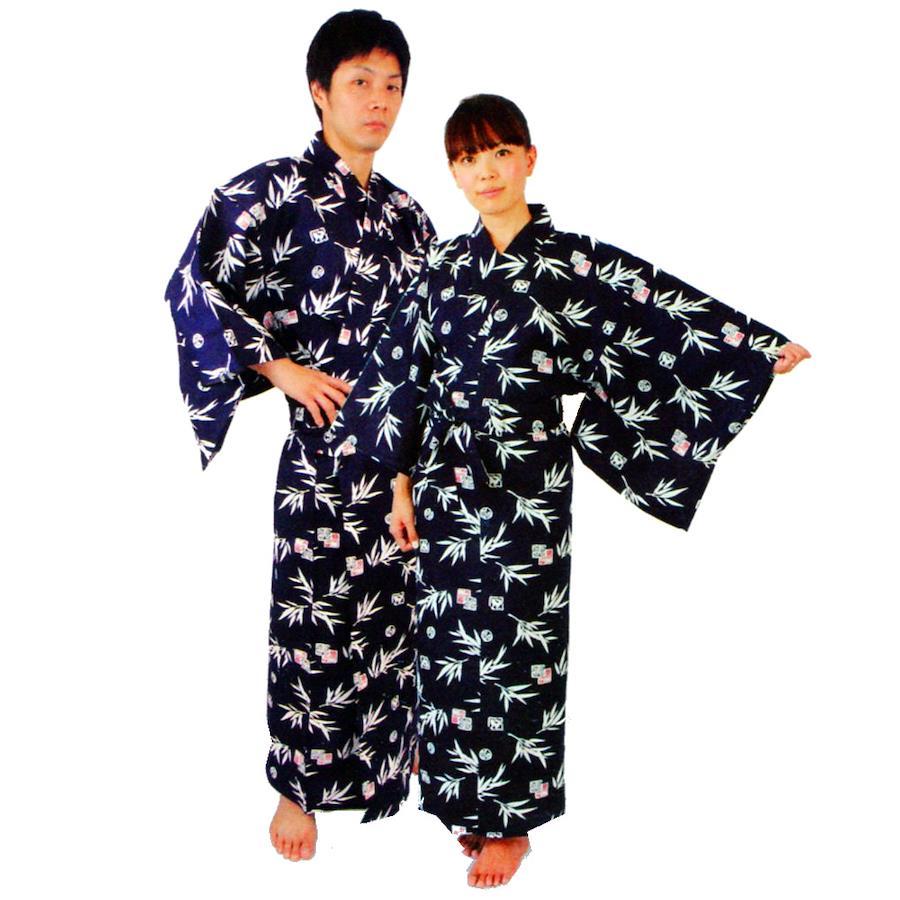The kimono is undoubtedly the best-known item of traditional Japanese clothing.
But what is a kimono, really? What distinguishes the kimono from other traditional Japanese clothes? Why is the kimono considered Japan’s national outfit?
Kimono culture and history
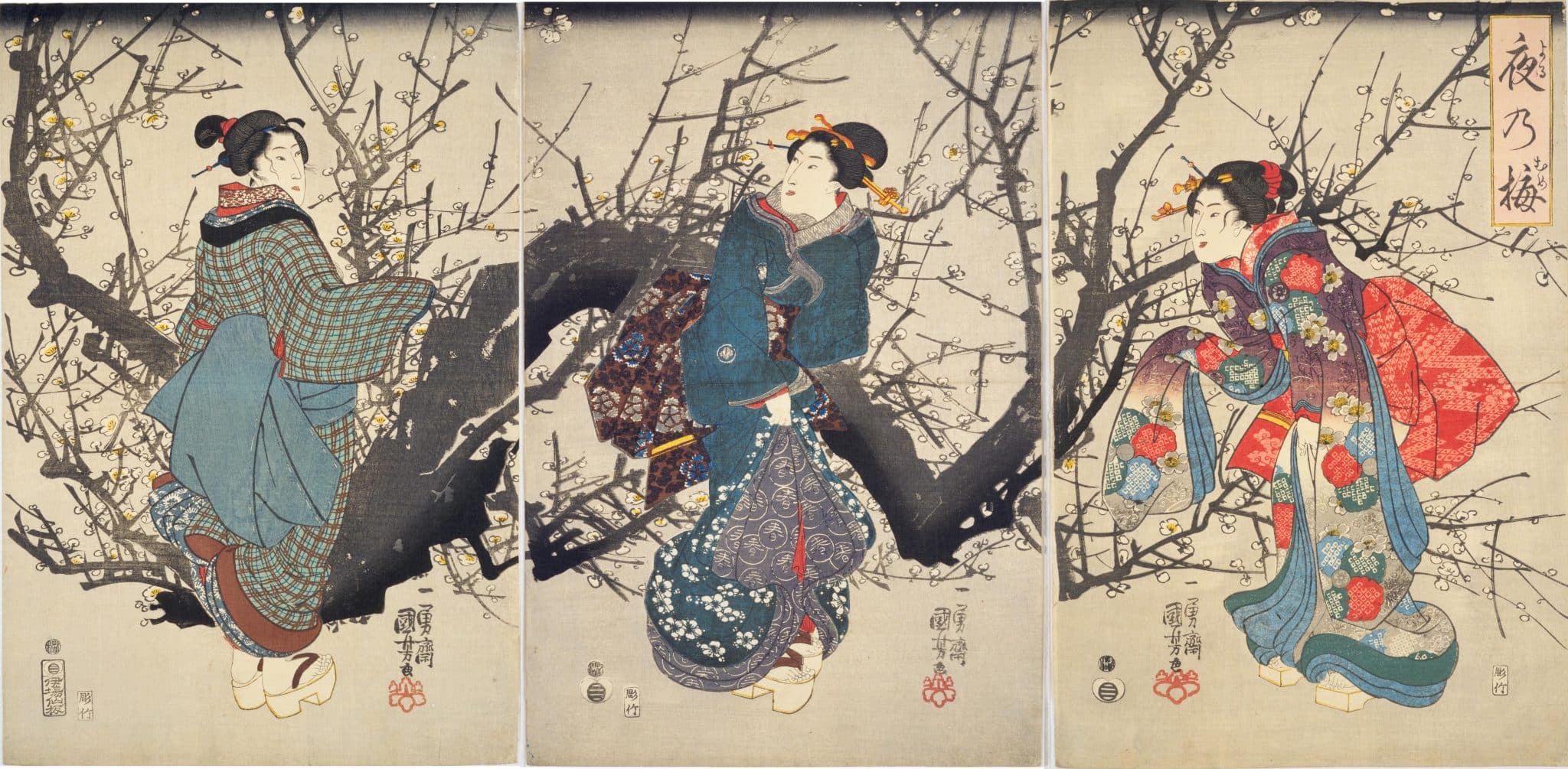
For years, the kimono has been an iconic symbol of traditional Japanese culture. Japan even uses it in its tourism marketing. It is an elegant, beautiful, and graceful formal outfit, which is easily recognizable as distinctly Japanese. It is to Japan what tartan plaid kilts are for Scotland.
Although the kimono has ancient roots, this iconic outfit evolved over the centuries. When Chinese people visited Japan in ancient times, they introduced new fashions, including robes wrapped left-over-right.
However, Chinese influence fell when Japanese culture surged during the classical Heian era (794-1185). The women’s obi sash grew wider, gradually gaining more importance during the feudal Edo era (1603-1867).
The kimono as we know it didn’t emerge until the Meiji era (1868-1912). Ironically, this is also when Japanese culture rapidly modernized. Among other things, traditional Japanese clothes began to be replaced by modern, Western clothing for everyday living.
Kimono basics
There are many different varieties of kimono, depending upon the occasion. And the addition of a haori (jacket) or hakama (trousers) can make a kimono look very different. To avoid confusion, we will concentrate on basic kimono facts.
The kimono starts with a T-shaped robe. The sleeves are typically long and wide. Younger girls wear brighter, flowery colors and more pink; older women wear less flashy designs. Male kimono are also darker and more plain.
A kimono is held together not with an obi, but with a koshihimo. The koshihimo is a cord which goes underneath the obi. A male obi is thinner than a female obi, and worn lower on the body.
In both cases, the obi is knotted in the back. The men’s obi knot is simpler than the more elaborate and decorative female equivalent. On a women’s kimono, an obijime cord usually goes over the obi, and helps keep the obi in place. The obijime is typically decorated with obidome (an ornament or jewelry).
When to wear kimono
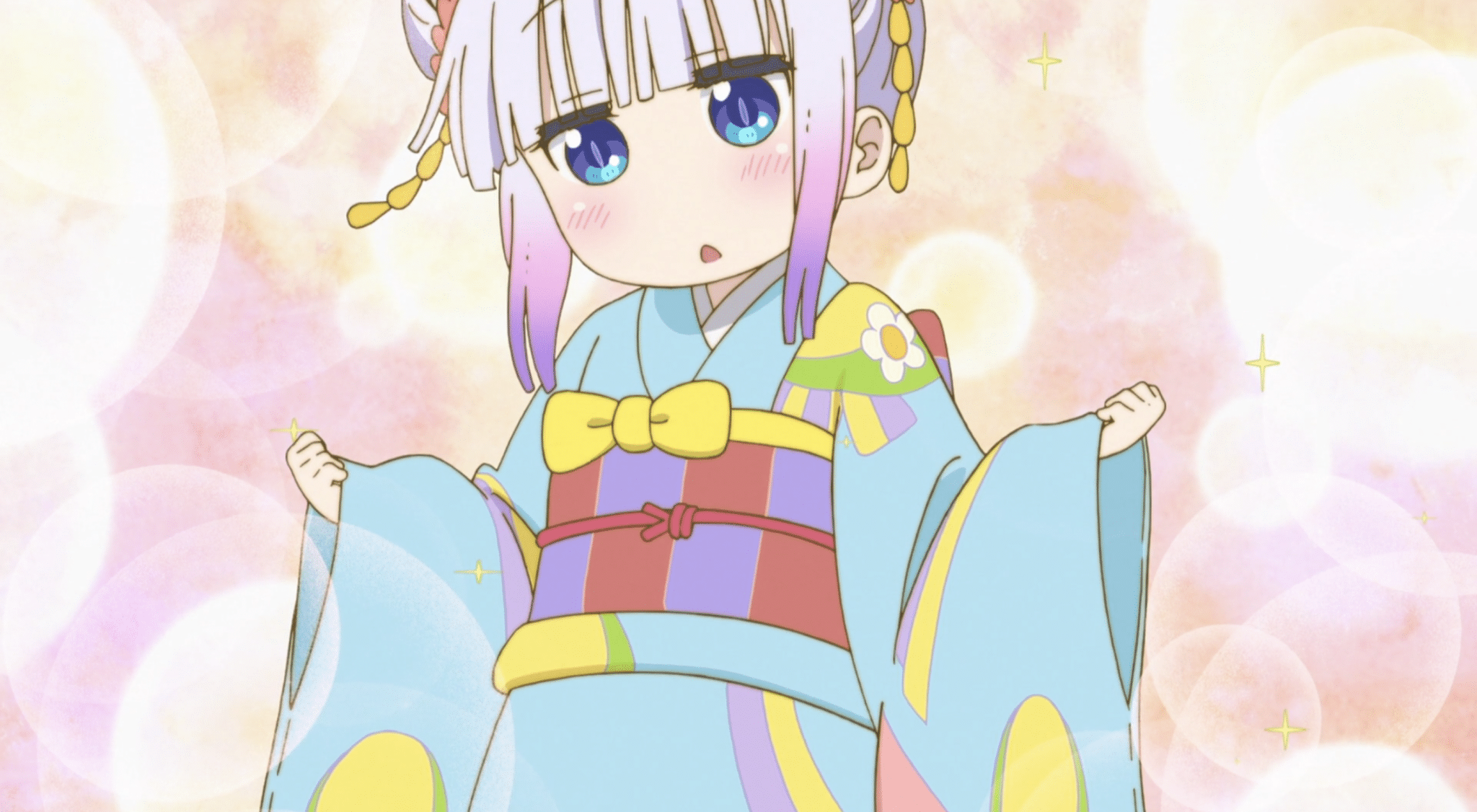
Since modernization, Japanese people have increasingly seen the kimono as a traditional, formal, and even old-fashioned outfit. It’s best reserved for special occasions.
The kimono is very similar to yukata, Japan’s other special occasion outfit. At a glance, it is easy to get them confused. However, yukata are typically made of lighter materials, which makes them more appropriate for the summer months.
A kimono would be better for colder events, such as Hatsumode (New Year’s shrine or temple visit) or Hanami (flower viewing, especially cherry blossoms). Children wear kimono for Seijin no Hi (Coming of Age Day) in January. Girls also wear them for Hinamatsuri (girls day) in March.
A kimono would also be good for a tea ceremony. One might also wear a kimono for a wedding or a funeral, although these events have special rules.
Kimono rules
Because the kimono is considered to be formal wear, there are etiquette rules to follow. For example:
- The left side of a kimono robe is worn over the right. Only ghosts wrap their kimono right-over-left.
- When wearing kimono, you should also wear nagajuban, a secondary robe which goes underneath.
- Zori sandals are considered appropriate footwear for kimono. However, some websites say that wooden geta are OK, too. Either way, you should wear tabi (toed socks designed for thonged sandals).
- Don’t wear a flowery kimono to a funeral. Funeral kimono are black.
- Take short steps when wearing a kimono. This is a good idea with yukata as well. But a proper kimono is less loose than a yukata, so short steps are even more essential.
If you have trouble putting on a kimono, kimono dressing services can help. Naturally, most are in Japan, but you can also find some in places with Japanese immigrant communities.
I hope this helps you better understand the kimono, Japan’s national outfit.
Check out Kimono Sellers on ZenPlus
If you’re interested in buying a high-quality kimono or other traditional Japanese clothes from authentic sellers in Japan, check out these storefronts on ZenPlus.

